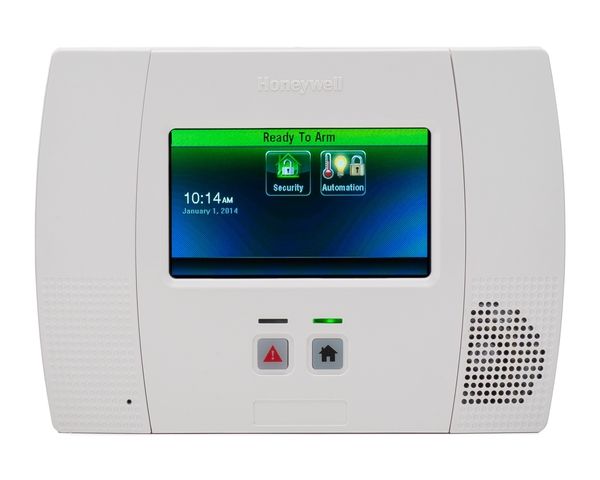It's Finally Here! The LYNX Touch L7000 Is Released! And We've Got Everything You Need!
Posted By Joshua UnsethIf you're just down from yesterday's loss by America's World Cup soccer team, maybe this news will help cheer you up! Honeywell has finally released its award winning L7000 to the public, after tantalizing the DIY community with little previews since early November 2013. If the L5200's roaringly successful debut is any indication, the L7000's release is likely to be met with unprecedented eagerness by alarm system enthusiasts.

Just coming off winning the ESX's "Best in Show" award, the L7000 may be the most impressive security system released to date by any company ever. The L7000 is really very similar to its one month old predecessor, the L5200. But for its large 7-inch display, ability to handle many more zones, and the fact that it's capable of monitoring up to 4 cameras (the L5200 can monitor only one), the L7000 is the slightly souped up version of an already impressive line of wireless security panels.
"While the L5200 is the system most people need, the L7000 is perfect for DIYers with big homes, or needs that are outside of the scope of the L5200," said Joshua Unseth, Alarm Grid's director of marketing. "We have made all the resources available for these units, so that anyone who wants to install the system on their own can do it very easily."
Alarm Grid's free resources have become well-known among security system enthusiasts. The Alarm Grid videos are given regular mentions in Amazon reviews and are regularly cited by customers as the impetus for choosing Alarm Grid. Unseth says that, along with their comprehensive list of frequently asked security system questions, the rich set of resources Alarm Grid provides is their biggest source of leads. "We believe that giving away everything that a consumer needs to know about their security system is the best way to build trust with consumers who are rightly mistrustful of this industries."
Alarm Grid's President, Sterling Donnelly said, "The L7000 security system might be new, but we have spent the last several months using it, testing it, and troubleshooting it. As consumers begin working with this new piece of equipment, they will quickly see how valuable having our resources at their fingerprints is." That said, Donnelly emphasized that Honeywell seems to have invested a lot into understanding the user experience. "Honeywell designed a panel that is easy to use, and hard to set up incorrectly. We don't anticipate consumers having many problems using the L7000. It's interface is the same as the L5200, and consumers have found that system to be both simple and reliable."
Honeywell's standards for equipment manufacturing are well-known, and the L7000 is no different. UL listed, the panel boasts every security feature under the sun including Advanced Protection Logic (APL), the ability to stream Total Connect cameras live over the local WIFI network using the l5100-WIFI modules and more. The system's flash upgradeable, just like the L5200, which makes the panel resistant to future updates. "This might be the most important change Honeywell has made to these systems, with regard to cost," said Donnelly. "While hardware limitations are always frustrating for users when a new product comes out and obsoletes an old product, Honeywell seems committed to making sure their consumers are able to continually update their panel for new features. Ultimately, this is good news for anyone putting a Honeywell panel in their house."





